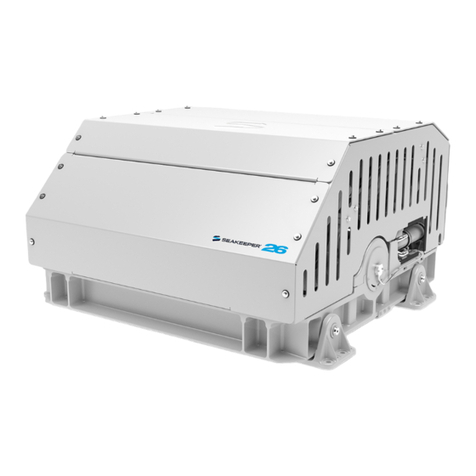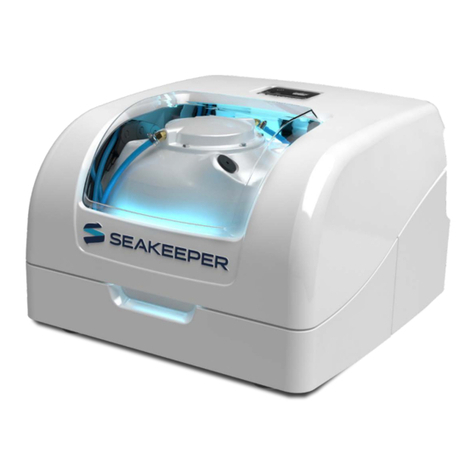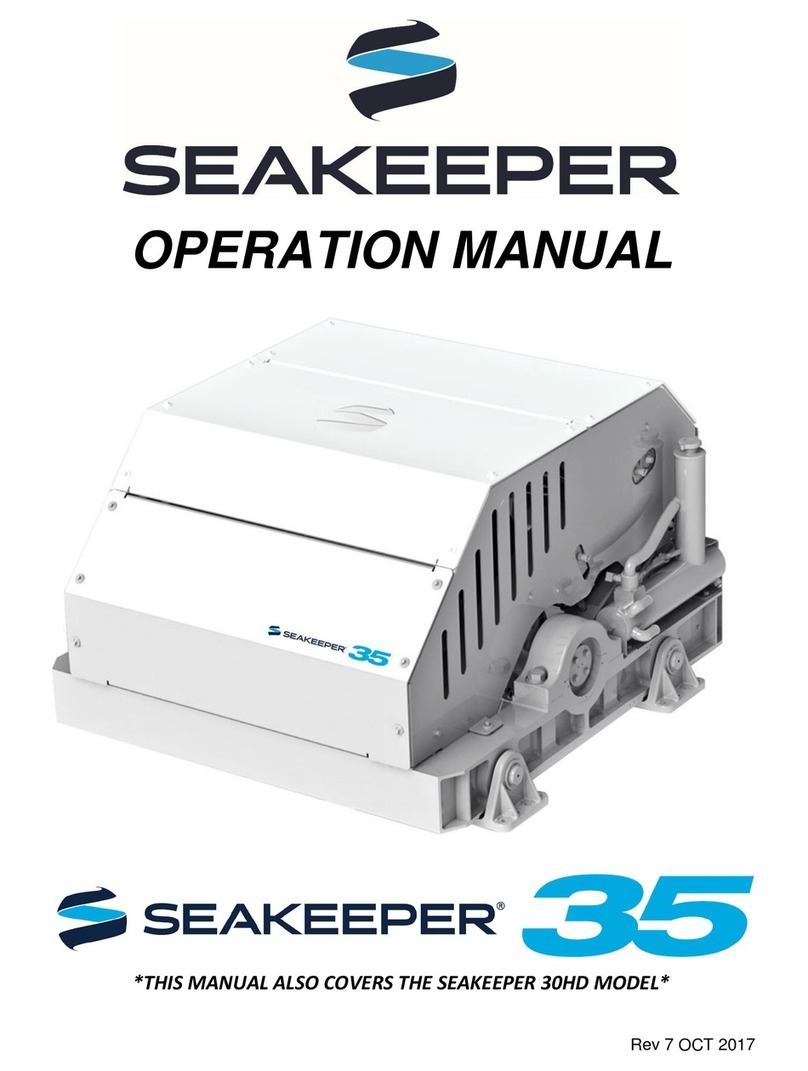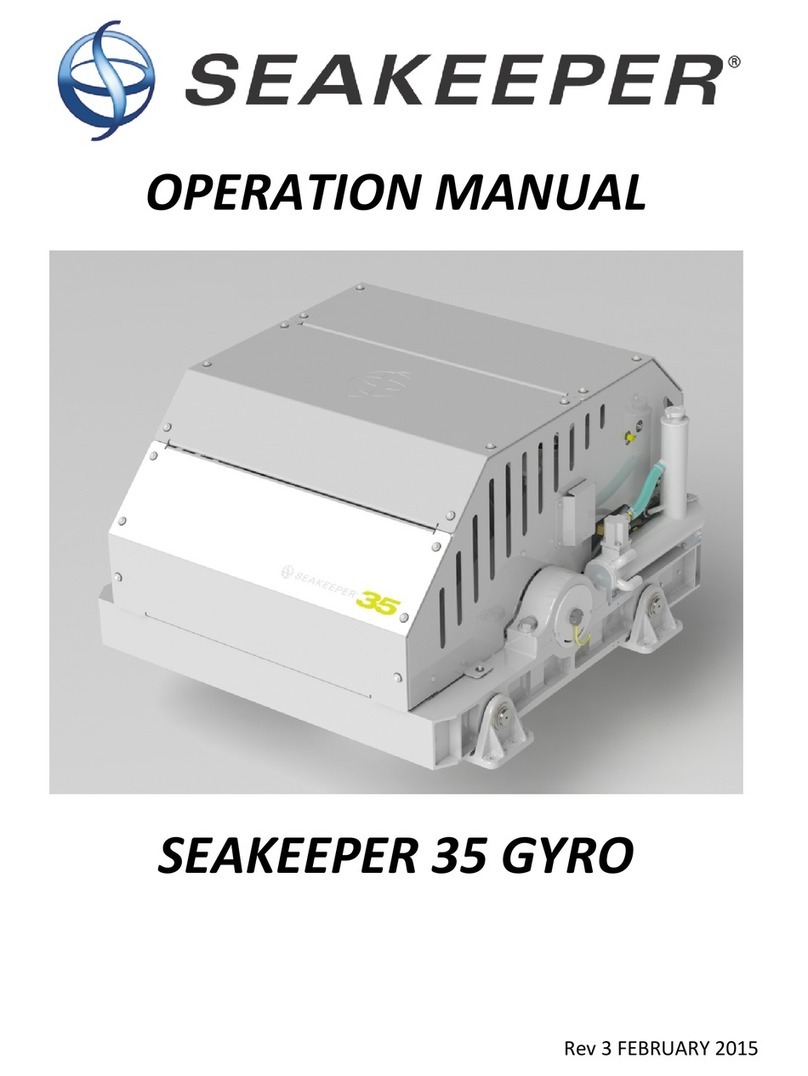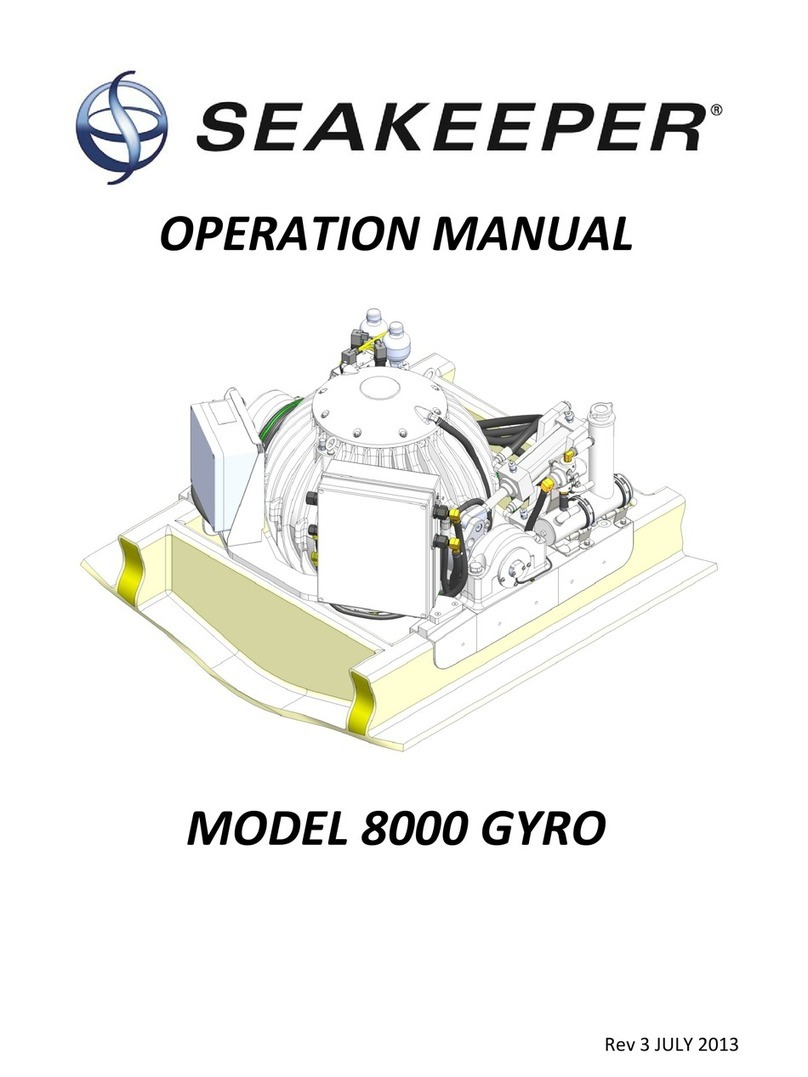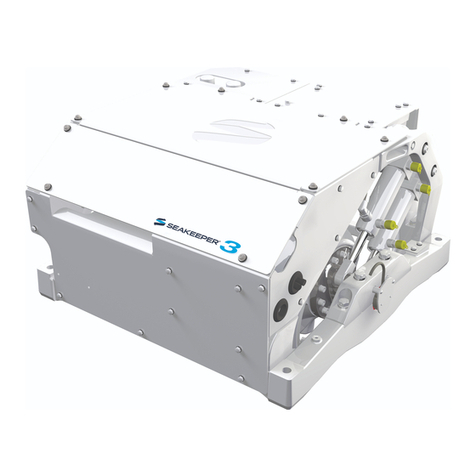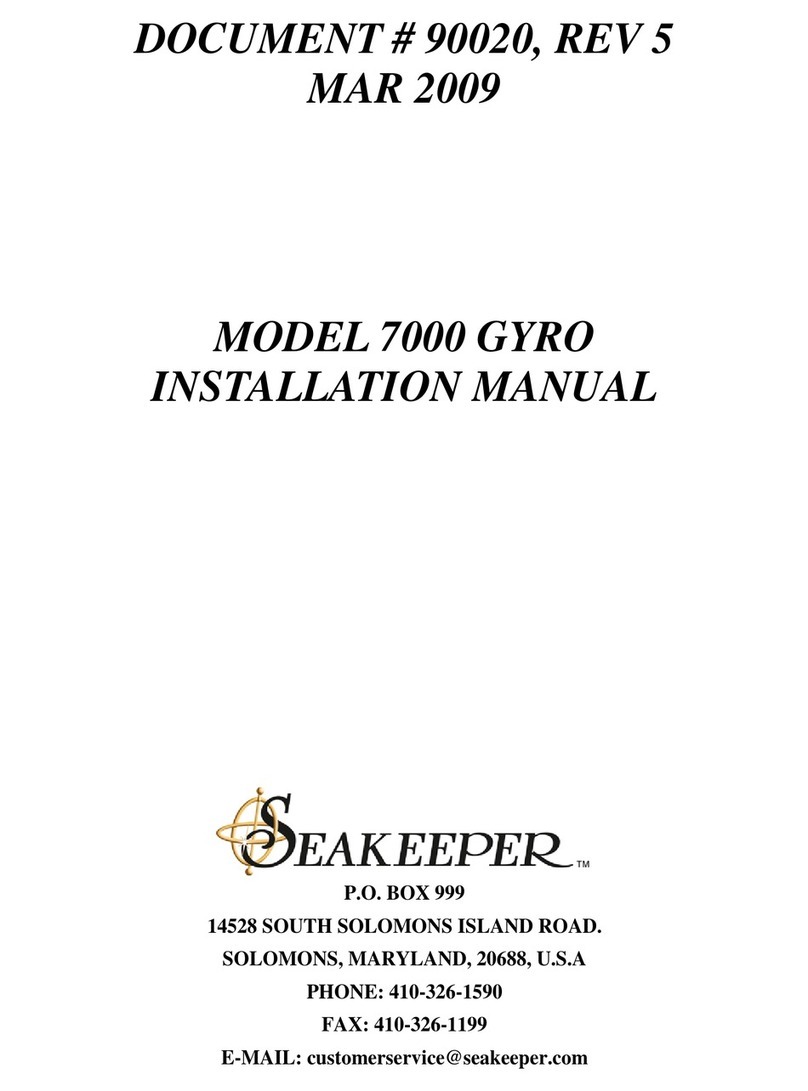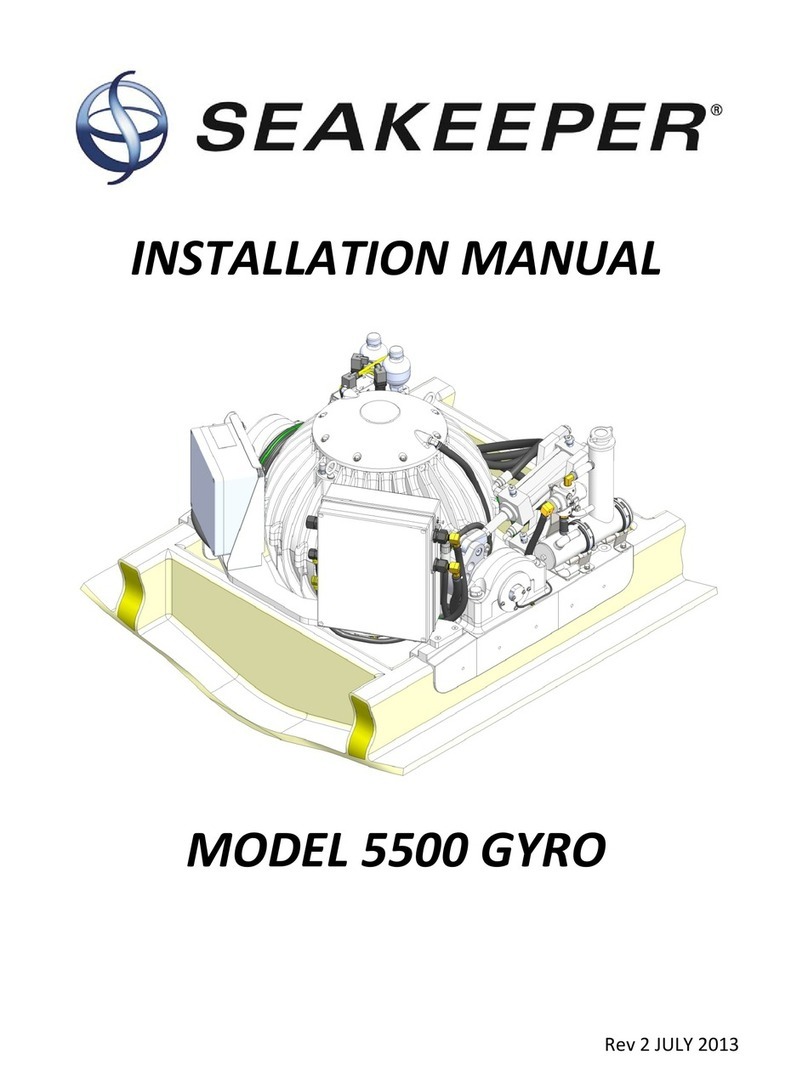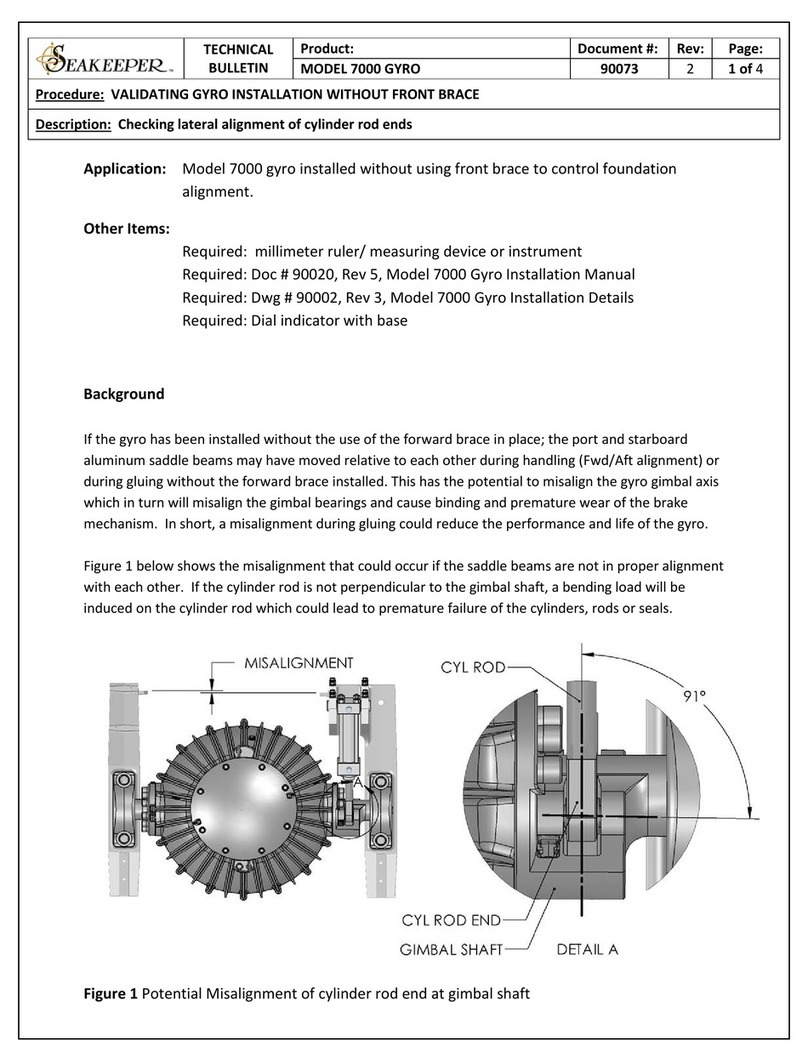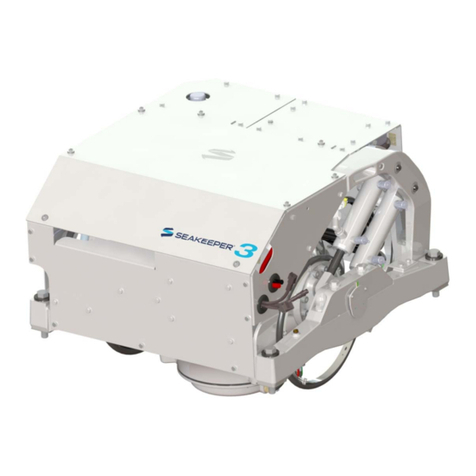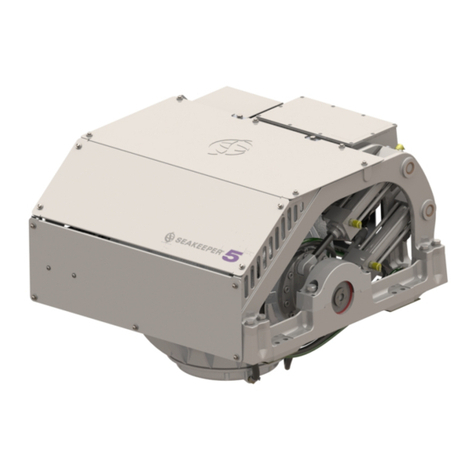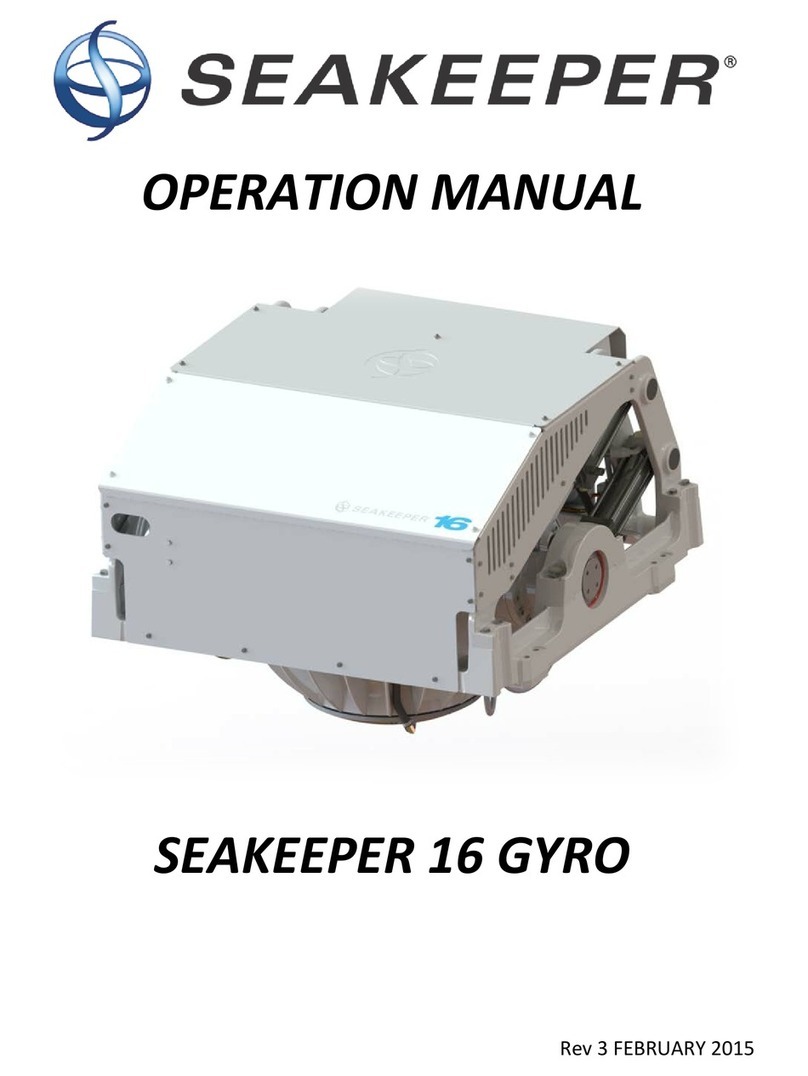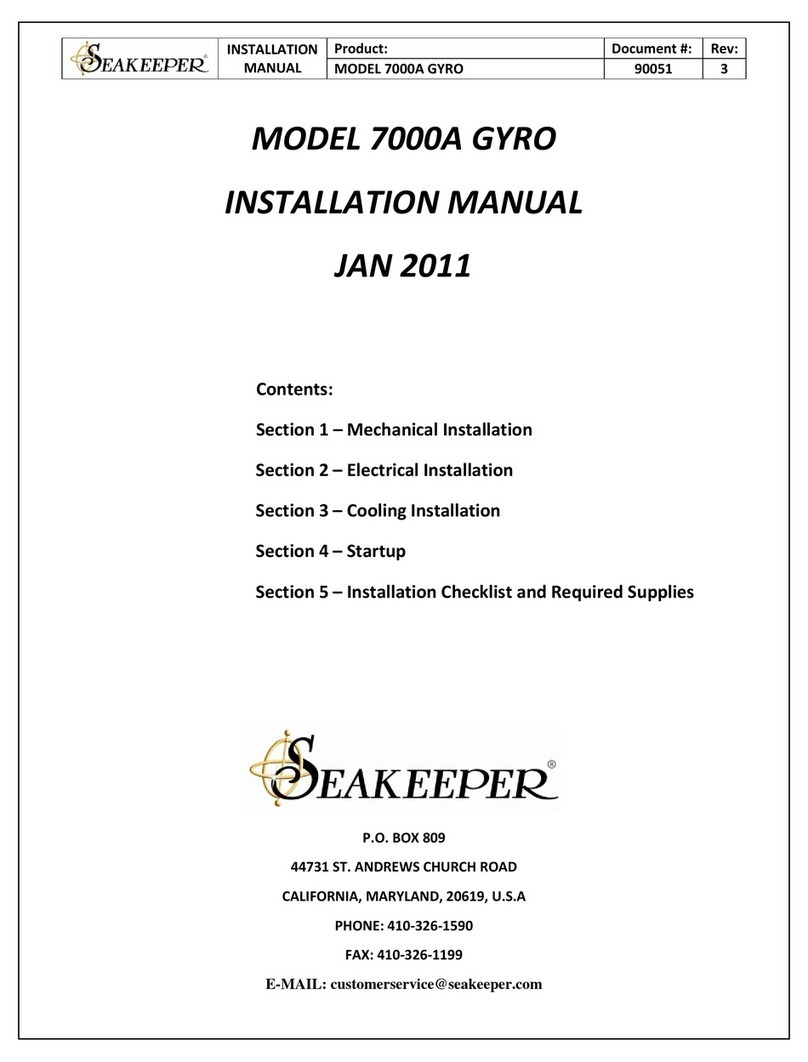1.4 MECHANICAL INSTALLATION
Reference Drawings:
•
90559 –Seakeeper 1 Generic Installation Guide
•
90516 –Seakeeper 1 Bolt-In Installation Details
•
90517 –Seakeeper 1 Installation Fixture Kit
•
90599 –Seakeeper 1 Bolt-In Kit
1.4.1 PREPARATION OF VESSEL STRUCTURE
The Seakeeper 1 Generic Installation Guide (90559) shows various structural arrangements to support
the integration of the Seakeeper 1. The Generic Installation Guide offers above and below deck
installation arrangements with fiber-reinforced plastic (FRP) and aluminum structures, which should
provide solutions for most vessels. Depending on the structure to which the Seakeeper is fastened,
blind threaded holes or through-bolting can be utilized. The Seakeeper 1 is affixed to the hull via four
bolts in the Seakeeper 1 frame. Each Seakeeper 1 foundation bolt has a vibration isolation assembly
to minimize the transmission of vibrations to the hull structure.
Refer to Seakeeper Drawing No. 90516 –Seakeeper 1 Bolt-In Installation Details. This drawing contains
critical design dimensions and loads that must be considered in the design of the boat’s structure that
will receive the Seakeeper 1. It is assumed that a proper structural analysis has been performed for
the vessel structure to which the Seakeeper will be fastened to ensure proper strength margins for
the loads the Seakeeper will create during operation.
The vessel structure supporting the Seakeeper should be installed so the Seakeeper is parallel to the
waterline in the transverse direction and within 2 degrees longitudinally. In addition, the four areas
on top of the structure on which the Seakeeper 1 will rest need to be co-planar within .06” (1.5 mm)
to minimize potential distortion of Seakeeper isolation mounts when installed.
Seakeeper offers an installation fixture kit, P/N 90517. The fixture has 4 holes located at the same
centers as the mounting holes on the Seakeeper 1. The fixture locates the hole patterns at the proper
spacing both in the fore-aft direction and the port-starboard direction. See Figure 5 for more details
regarding the Seakeeper 1 template.
Note: Do NOT use the installation fixture to establish the Seakeeper envelope dimensions or
clearances. Refer to Drawing No. 90516 –Seakeeper 1 Bolt-In Installation Guide –for envelope
dimensions. A 3-D model of the Seakeeper 1 is available on the Seakeeper website
(https://www.seakeeper.com/technical-library/) to aid in designing the Seakeeper foundation and the
space around the Seakeeper.
